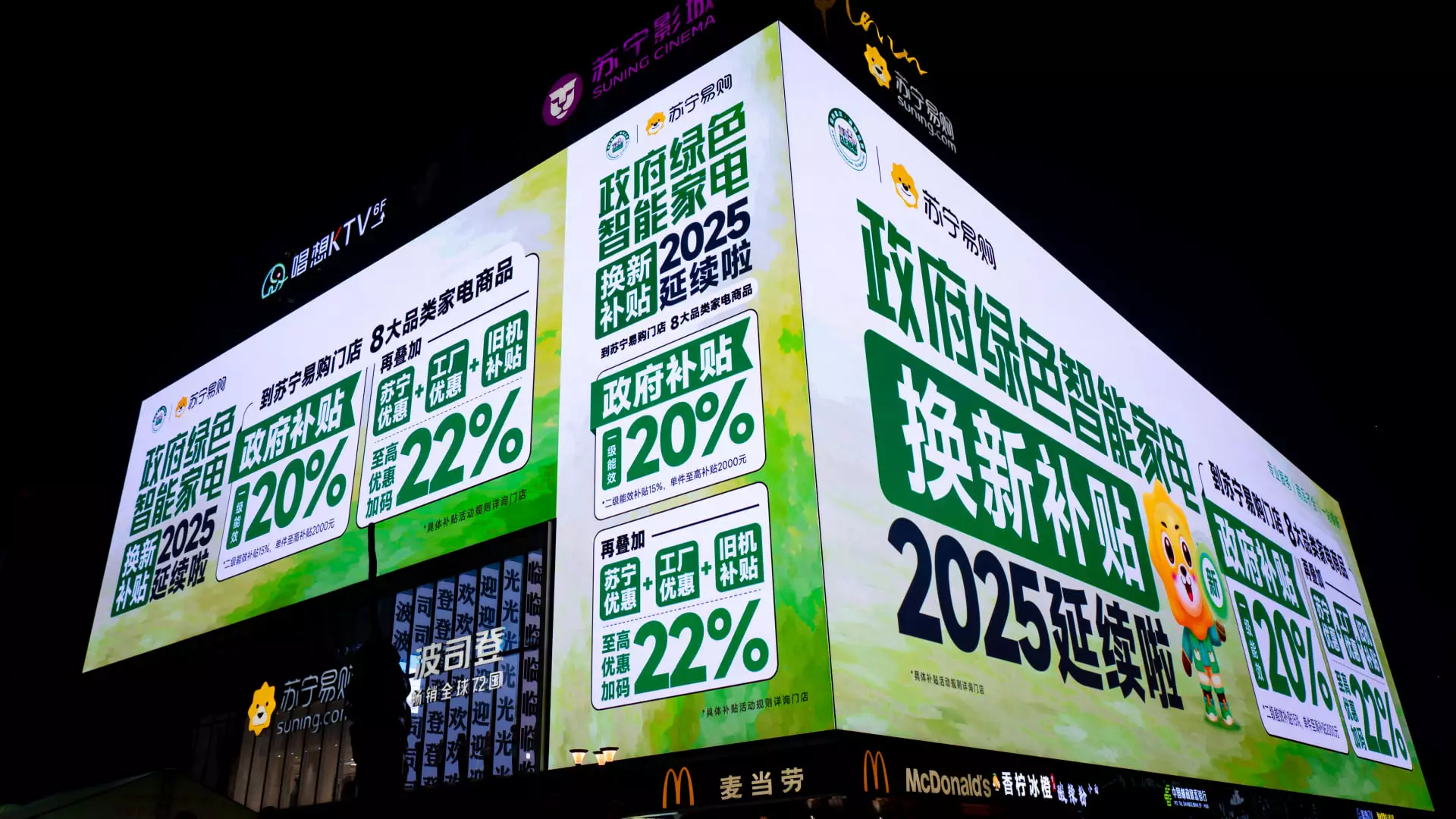China’s economic strategy for 2025 has initiated an expanded consumer stimulus initiative, aimed at aiding the domestic economy by enhancing consumer spending. This new policy could be a strategic pivot for specific sectors, particularly for leading home appliance manufacturers. By analyzing the implications of these measures, we can uncover how they will ripple through the economy and influence stock market dynamics.
Rather than dishing out cash directly to consumers, Chinese authorities are introducing an indirect approach through a trade-in program that incentivizes the purchase of home appliances. This initiative marks a significant shift in the way economic support programs are structured in China. Since last summer, the government has been subsidizing the purchase of various appliances, which are crucial for modern living standards. Recent additions to this list—microwaves, water purifiers, dishwashers, and rice cookers—suggest a strategic intent to enhance consumer choice and encourage spending in priority segments.
Equity analyst Jeff Zhang of Morningstar has highlighted that these new measures could largely benefit leading players in the home appliance sector, such as Midea, Gree, and Haier. By recognizing these companies as the probable winners of the subsidy program, investors are re-evaluating revenue forecasts for 2025 and beyond, adjusting expectations based on anticipated demand increases.
Stock Market Reactions: A Rising Tide for Home Appliance Stocks
The stock market’s response to this stimulus initiative has been significant. Midea’s shares staged a remarkable recovery last year, climbing nearly 38%, and analysts foresee a further rise of approximately 26% based on updated price targets. Haier shares, which increased by 29%, are projected to gain an additional 48% due to the favorable outlook sparked by the new measures. Similarly, Gree shares bounced back by nearly 50%, reflecting heightened investor confidence in the appliances sector fueled by government support.
While these figures point towards optimistic growth trajectories for these companies, the impending release of China’s retail sales and GDP data—set for January 17—adds an element of uncertainty. Investors are keen to observe whether the economic climate will reinforce these encouraging trends or present potential pitfalls.
Potential Challenges: The Shadow of Economic Variables
However, amidst the optimism, there is a cautious undertone regarding the sustainability of this growth. Analysts from Citigroup have emphasized that potential price wars, combined with an ongoing weakness in the real estate sector, pose significant risks to stock performance. The 3.3% year-on-year reduction in home appliance prices, as indicated by recent official data, underscores the potential for a dampened consumer sentiment moving forward.
This scenario suggests that despite the subsidies, the consumer appetite may not return to pre-pandemic exuberance, as households continue to prioritize saving and future financial stability over immediate spending.
The E-Commerce Edge: Capitalizing on Consumer Behavior
In conjunction with the appliance sector, major e-commerce platforms have emerged as key beneficiaries of the trade-in subsidies. JD.com, for instance, has been identified as well-positioned to capitalize on increased demand, aided by strong supply chain capabilities and prior experience with such initiatives. With a bullish price target set at $51 for its U.S.-traded American depositary receipts, JD.com stands to make substantial gains, further amplified by the ongoing consumer stimulus program.
Alibaba, on the other hand, with its robust Tmall and Taobao platforms, is expected to also leverage the positive sentiment surrounding the policy. Analysts view Alibaba’s established relationships with major brands as critical for capturing increased market share in this evolving landscape.
While PDD may experience comparatively less benefit, the competition among these e-commerce giants illustrates a broader shift toward electronics and appliances over traditional categories like food and clothing. This trend indicates a lasting transformation in consumer shopping behaviors, potentially reshaping market dynamics.
The 2025 consumer stimulus framework is set to unfold in a series of phases, with further details expected to emerge during an annual parliamentary meeting in early March. As the government allocates approximately 81 billion yuan ($11.05 billion) for the trade-in subsidies, consumers and investors alike are anticipating impacts on purchasing behaviors, alongside official retail performance metrics.
While the initial signs of recovery and growth in the home appliance sector are promising, the broader implications of China’s economic policies remain to be seen. Investor vigilance, coupled with an acute awareness of underlying economic variables, will be essential as the country navigates its path to recovery in the coming years.

